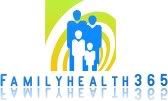The American Heart Association released new guidelines yesterday to encourage bystanders to immediately start cardiopulmonary resuscitation on someone whose heart has stopped.
All that's required is rapid pushing on the chest. That mean's no more mouth-to-mouth breaths, the first step under the old guidlines.
"What this means is CPR is now easier than ever," says Michele Hooper, a paramedic and CPR instructor for the association.
"More people will be able to do CPR and more lives can be saved."
"We want them to identify an unresponsive person and start pushing hard and push fast," she added. "We don't want people watching. We don't want people waiting for EMS to arrive."
CPR is used to help a person who has suffered a cardiac arrest - meaning they're not breathing and have no pulse.
Starting it right away and following up with a difibrulator can increase survival rates.
However, less than 50% of those who go into cardiac arrest get bystander CPR.
Researchers found that bystanders were often afraid they'd catch something by putting their mouth on a stranger's mouth - and so did nothing at all.
"It's a lot to ask somebody to put their mouth on a complete stranger," said Dr. Holly Phillips, WCBS/Ch. 2 medical correspondent and an internist affiliated with Lenox Hill Hospital.
And it turned out the old requirement of starting with two breaths delayed chest compressions, which keep blood moving through the body.
Now officials say the most important thing is to start compressions - pressing on the center of the chest - and worry about breathing later.
Compressions should be performed at a rate of 100 times a minute - roughly the same beat as the Bee Gees' hit "Stayin' Alive" - at depth of two inches.
"I think this is a good move," Phillips said.
"We know right now that people who go into sudden cardiac arrest [out of a hospital], their rates of survival are about 2 percent. Research shows those numbers could increase by 500 percent [with bystander CPR.]"
The Heart Association began a push towards "hands-only" CPR in 2008, but the full guideline changes didn't come until yesterday.
nydailynews.com









2 comments
canlı sex hattı
heets
https://cfimi.com/
salt likit
salt likit
L2R
https://saglamproxy.com
metin2 proxy
proxy satın al
knight online proxy
mobil proxy satın al
YNBW8
Post a Comment
[▼/▲] More Emoticons